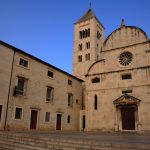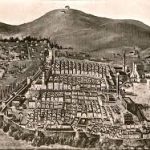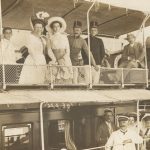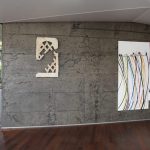Continuing our in-depth look at the top destinations of Croatia, TCN looks at the booming Dalmatian capital of Split on February 3, 2016. And how better than through the eyes of a man whose passion for his home city is unparalled. TCN is delighted to welcome Ivica Profaca, once our main contributor on Total Split, and these days a very engaging tour guide, whose walking tours of Split have already achieved considerable acclaim.
In the last few years Split has become one of the biggest Croatian tourist hits, with a more than 20 percent annual rise. With its heritage, history, vibrance and spirit, Split is worth visiting, but even more it’s worth getting to know it.
In our series “25 Things to Know About…” this is the latest stop. That’s where Ivica Profaca – a friend, Total’s contributor, journalist and tour guide deeply in love with his city – comes in. This list is just an introduction in what Ivica has to offer as a guide, and it could have been much longer.
1 How did Split get its name?
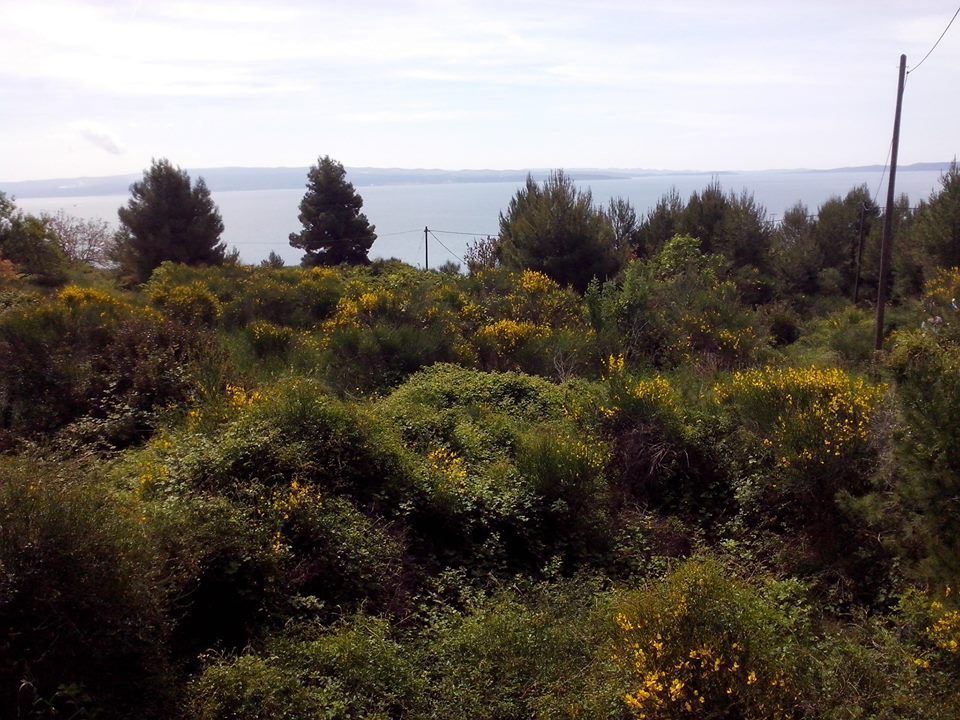
When this spring you see all the hills around Split scattered with small yellow flowers, this will be much more than just an introduction to a warmer part of the year. This flower is locally known as brnistra, in English it’s Spanish broom or weaver’s broom, and legend says it’s the origin of city’s name. The clue for the riddle lies in its old Greek name aspalathos, allegedly also a name for the first Greek settlement that once existed on the same spot, before the Romans came in. From Aspalathos, today’s city’s name was derived through Spalatium, Spalatum, Spalato and finally Split. The other theory is much less romantic, and temptingly simple; accordingly, the name came after the Diocletian’s Palace had been already built, and connection is “palatium”. A famous Roman road map dating to late 4th century mentions Spalato. Thus, it’s up to you which version you would prefer. And those yellow flowers are beautiful anyway.
2 City founded by a Roman Emperor. Beat that
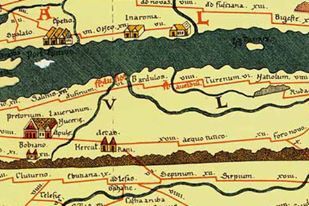
We learned above that even before Diocletian some settlement existed where Split is today. Nevertheless, this prominent and long-reigning Roman Emperor is the man who is usually named as a founder of the city. His Palace is the heart, soul and foundation of Split, and with tourism developing it’s also Split’s biggest asset. It’s really hard to point to only a few things worth seeing and visiting inside the Palace – starting with the substructures, Peristil square (which still serves as a public square after 1,700 years), imperial mausoleum turned into a cathedral, Palace’s gates, the list can go on and on. Still, maybe the most important connection between Diocletian and his palace with today’s Split is that it’s a living structure. The old town is not just a monument, it’s a place that still lives, and it should stay that way. Without its people, not visitors but inhabitants, the Palace is just an empty shell.
3 The oldest Cathedral in the world
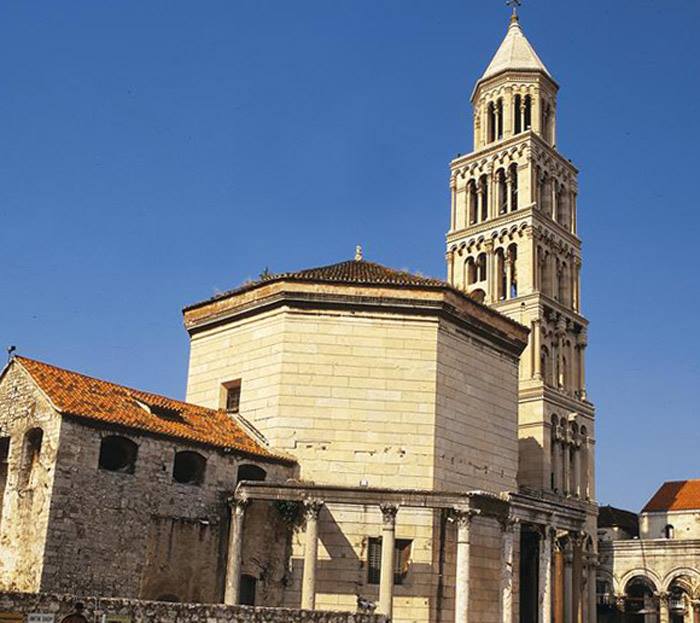
The Cathedral of Saint Domnius, consecrated at the turn of the 7th century AD, is regarded as the oldest Catholic cathedral in the world that remains in use in its original structure, without near-complete renovation at a later date (except for altars and bell tower dating from the 12th century). It’s more than a hundred years older than the one in Aachen, where Charles the Great was coronated. Furthermore the structure itself, built in AD 305 as the Mausoleum of Diocletian, is the second oldest structure used by any Christian Cathedral.
4. Diocletian’s Palace substructures – heritage preserved by the human waste
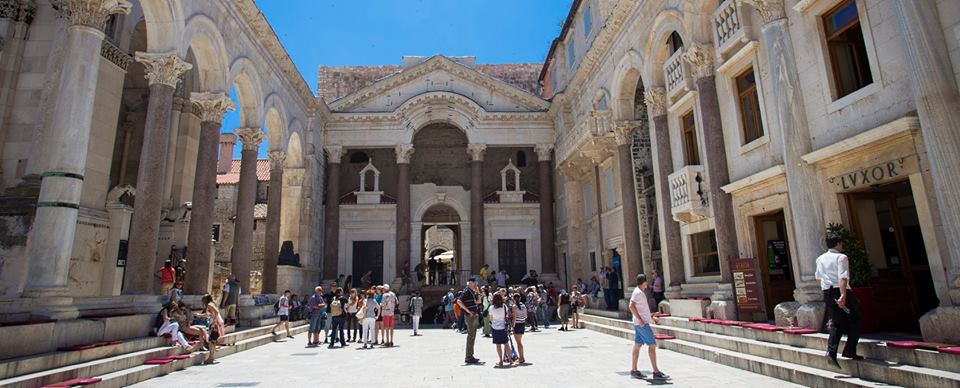
Let’s go back once again to the Diocletian’s Palace, we told you it’s a central point of the whole city. And to feel a spirit of the past, don’t miss visiting Palace’s substructures. You might be a Game of Thrones fan, but there are so many other reasons, starting from incredible construction skills by old Romans to reconstruct what the life must have been like back then. There are 68 rooms, of all shapes and sizes, and they are an exact copy of Diocletian’s residence which stood just upstairs. After finishing the tour, try to imagine what was it like few centuries later, when Substructures served as a giant septic tank for all the houses newly built above. Not a very nice picture perhaps, but that’s how this structure was preserved so well.
5 The Sphynxes of Split
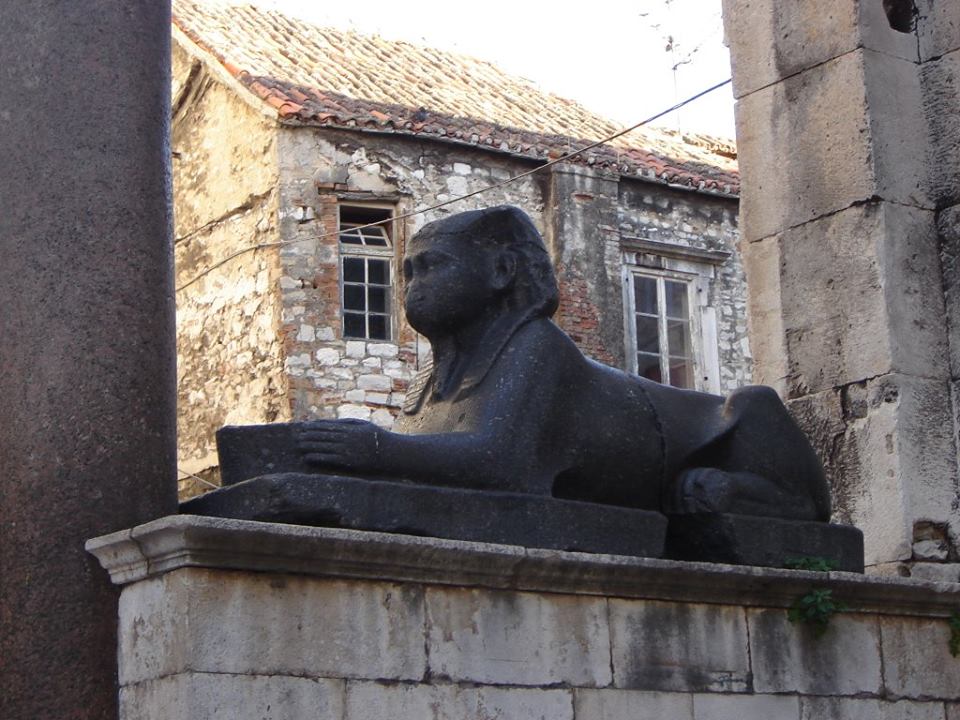
Split was founded thanks to Roman emperor Diocletian, and most of its heritage can be traced all the way to Roman times. However, probably one of the top five the most photographed spots in Split has even older origins, ancient Egyptian. Of course, we are talking about the Split Sphynxes. The one in front of the cathedral, made 3,600 years ago, is the best preserved, and definitely the most famous, but there were much more of them scattered around the Palace by Diocletian. What they were doing there, how many of them once existed, and where are they now? Read more here.
6 Eight UNESCO World Heritage Sites within two hours of Split
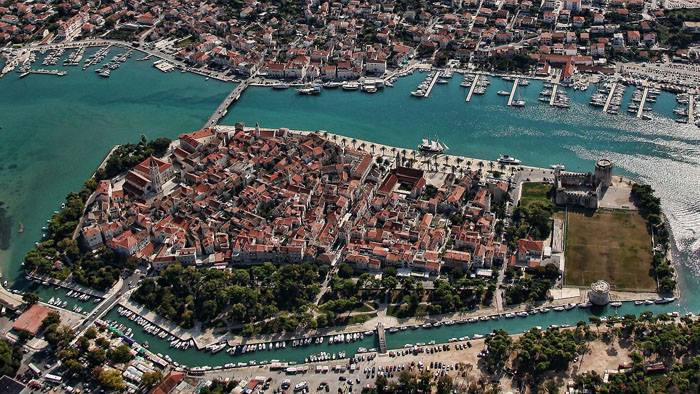
Culture, heritage, culture and a little more heritage. Did you know you can visit eight UNESCO World Heritage Sites within two hours of Split? Obviously, Diocletian’s Palace is right here at our doorstep. Only half an hour of easy drive is town of Trogir, just a little bit farther is the Cathedral of St. James in Sibenik. Motorway A1 brought even Plitvice Lakes close enough for a day trip, as well as Mostar in Bosnia-Herzegovina. Improved transport connections are the key to some others, especially by the seaplanes of European Coastal Airlines. With ECA, you will be able to catch the Euphrasian Basilica in Porec via seaplane to Pula, the old town of Dubrovnik is just a bus ride after the 45-minute flight from downtown Split. If you don’t fancy the two-hour ferry to Stari Grad, take the 15-minute flight to Jelsa to visit the Stari Grad Plain. In short, you will run out of days to visit them all.
7 A rare painting of Prophet Mohamed
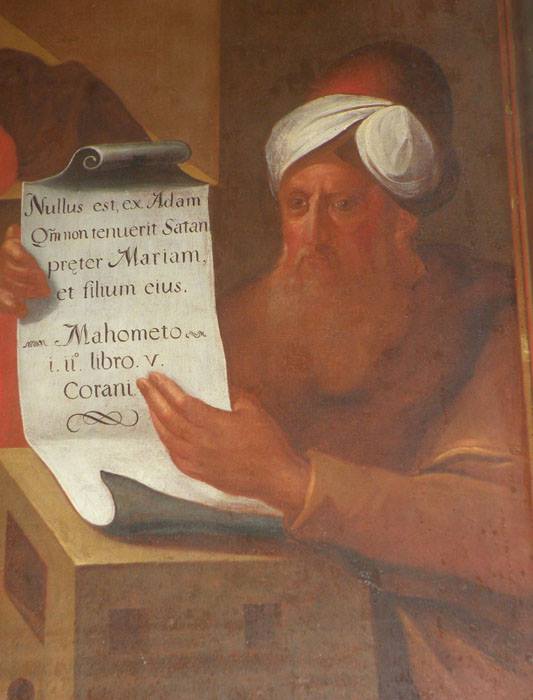
One of the best known rules of Islam is that art should not depict any human being, especially not Prophet Muhammad. There are exceptions in countries like Turkey or Iran, but in general the written word is much more important mean of spreading their faith than images. We all remember the turmoil in Islamic countries caused by cartoons in Danish newspapers.
Even Christian artists rarely took Muhammad as a “model”, and one of the rare examples can be seen in one of the most beautiful religious buildings in Split; the monastery of Saint Anthony near Poljud Stadium. This hidden jewel is not known even to many of Split citizens, including those who are coming there to pray. It’s probably one of the most interesting depictions of the Islamic prophet in European art. Furthermore, according to legend it also saved this monastery from Ottoman destruction. Read about this and other wonders of this truly special church here.
8 City with 2,000 years of Jewish presence
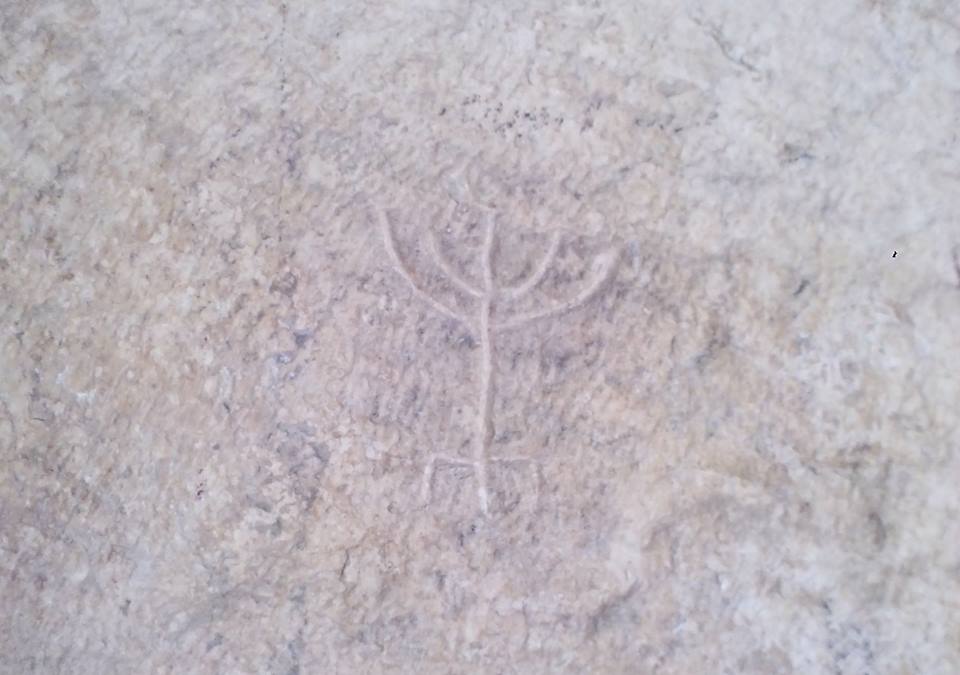
Split has a synagogue which is the third oldest still active in Europe, but the history of the Jewish community is far richer than that. Since the 2nd century they lived in nearby Salona, a 60,000 strong capital of Roman province Dalmatia. After Barbarians from the east destroyed the city, and the population fled toward Diocletian’s Palace, Jews moved with others, and settled in the southeast corner of the Palace. Right there, in the Substructures carved menoras are still visible, pointing that maybe first synagogue was based there. In early 1500s, Jewish community moved to the northwest part of the Palace, and lived there mostly in harmony with the rest of population, participating strongly in social life. In the 18th century that part of Split became a ghetto, but was abolished by Napoleon. Beside the synagogue, an important landmark is old Jewish cemetery on Marjan, founded in 1573. Unfortunately, the Jewish community was more than halved in World War II.
9 The place where the last legal Roman emperor was killed
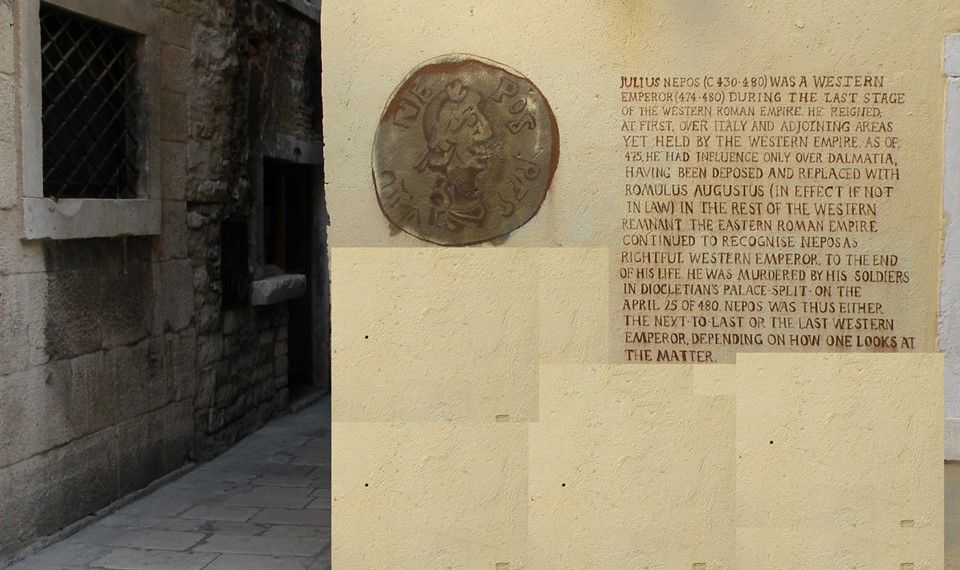
If you put Split and Roman Emperor in one sentence, the obvious association is Diocletian. However, he wasn’t the only one. On April 25, 480 the last legal Emperor of the Western Roman Empire Julius Nepos was killed on the streets of Diocletian’s Palace. There is even a street bearing his name and a mural with his biography, as an example of citizens’ taking a step ahead of authorities in preserving the city’s heritage. Julius Nepos ruled from 474 to 475 when he was overthrown and 12-year old Romulus Augustulus appointed. Nepos fled to Dalmatia. However, Romulus was never recognised by the Emperor at Constantinople who never stopped to consider Nepos only legal ruler of the west. Julius Nepos continued to rule in Dalmatia as Emperor, until he was killed by his own soldiers.
10 “The most beautiful place on Earth” as a foundation of urban spirit
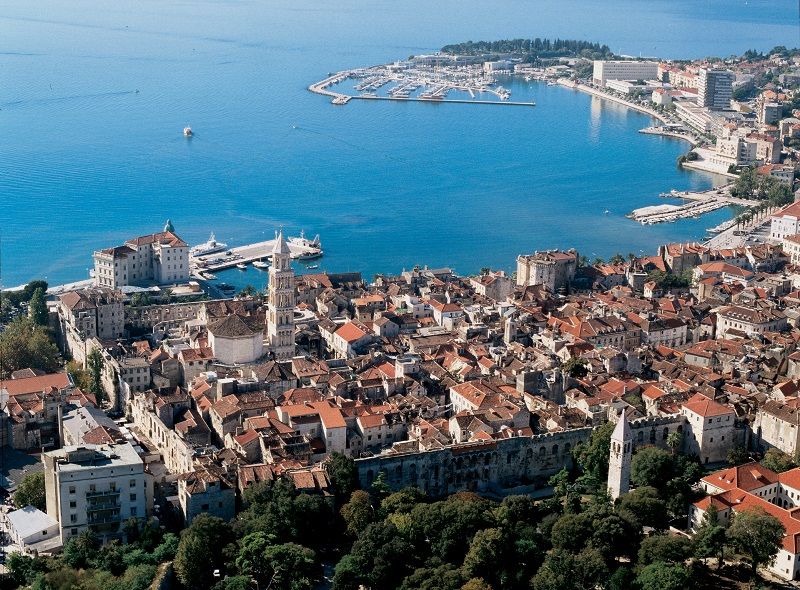
There is no other Split. What is even London compared to Split. Who can pay for this beauty? Those are just a few of countless saying used to make a simple case: Split is the most beautiful place in the world. Of course, there is no most beautiful place in the world, but people in Split genuinely and sincerely believe in that. So, don’t oppose that view.
11 Marjan hill and forest park with its churches – recreation of body and spirit
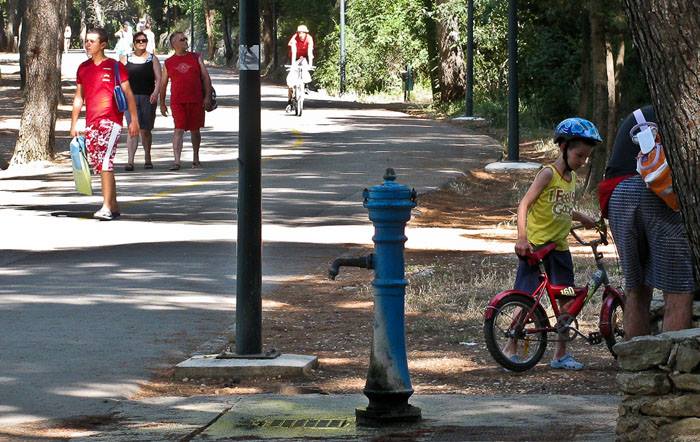
For a large European city, Split is blessed by nature. The Adriatic glistens in front of the city, and to the right is Marjan, a divine green hill which is not only the lungs of the city, but also home to some amazing heritage. Possibilities of recreation are endless, both for mind and body. There are miles and miles of hiking, cycling, jogging, climbing forest paths, and a string of beaches, plus some spectacular views as a bonus. On the other hand, Marjan was always a city’s spiritual sanctuary with its miniature centuries old churches. One of them, Our Lady of Bethlehem hosts a midnight mass on Christmas eve. But not just any mass, this one starts at 4pm. To learn more about Marjan, we have a whole series here (links to previous parts are at the bottom).
12 Football club with a glorious history, and semi-religious status
There is a story of sport in Split, and there is a story about Hajduk. Founded in 1911, this football club is so much more than just a sport team. Hajduk is one of the strongest city’s symbols, and no matter if it wins or loses, Hajduk lives forever as dozens of murals around town are saying. This club is by far the biggest in Croatia in terms of fans number and devotion. Hajduk always lived with its town, including some hard moments. During World War II, the whole team declined playing in the Italian league, and joined the antifascist movement. They played accross Mediterranean with allied forces teams, and the highest honour came when Hajduk was declared an official team of the Free France. Today, Hajduk is maybe not that good on a pitch, but watching their games is an experience for itself, just like visiting the club’s stadium, recently protected as a landmark of modern architecture. Check out video of the centennial celebration in 2011
13 Miniature church of St. Martin built inside the Diocletian’s Palace wall
Of all churches in Split, and there are dozens of them only in the Old town and on Marjan, the most peculiar one is miniature Saint Martin. It’s been built within the northern wall of Diocletian’s Palace, where once stood the guards’ corridor above the Golden Gate. It’s really tiny, only 1.6 meters wide and ten meters long, and filled with history. How it wouldn’t be, it was originally built in the 5th century, and some important pieces were added in 11th. This church also gives completely new view on nearby statue of Gregory of Nin, and to the cathedral’s bell tower. Learn more about it here.
14 From swimming to hiking in only minutes
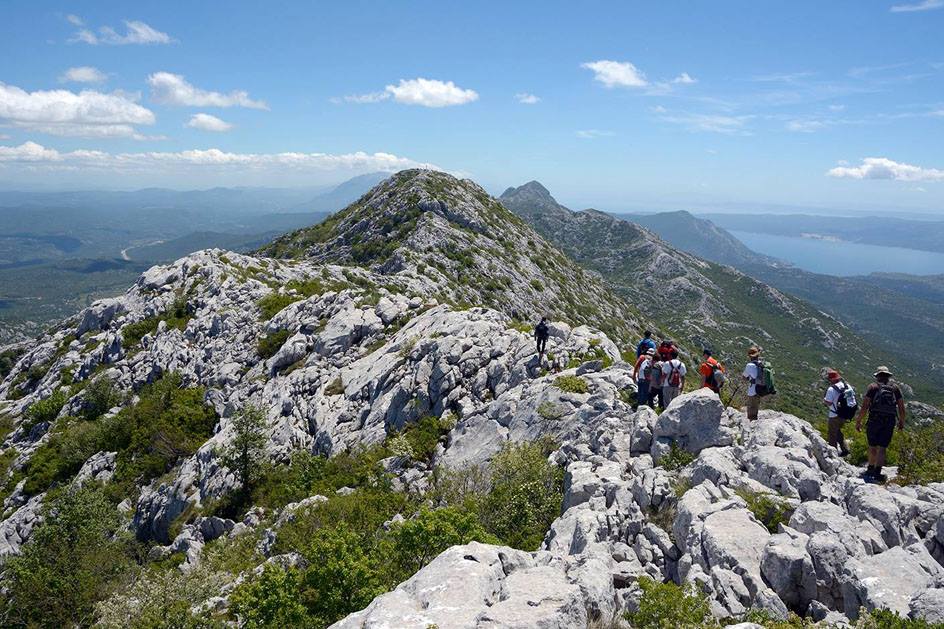
For a city of 200,000 Split has excellent natural features, especially when we come to its beaches. It’s rare to find such a big town with almost 20 kilometers of swimmable coast, and sea which is as clean as on some of Dalmatian islands off shore. Choose between bodies-packed Bacvice and almost deserted corners around Marjan hill, there is something for every taste, even nude bathing. And just above it there are some great hiking options, either on Marjan, or more daring mountains around city like Mosor, Kozjak or farther inland or up and down the coast. Recently some interesting cycling routes had been marked, mostly going inland. As for hiking, this might be one idea.
15 Markets filled with flavours and colours
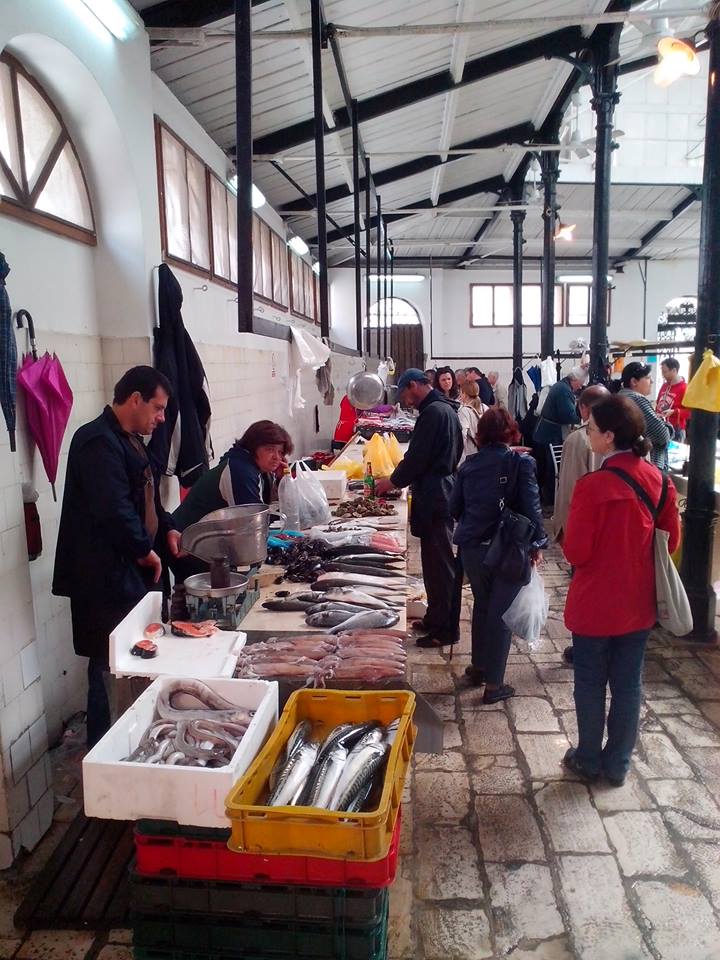
No matter how many supermarkets and shopping malls are there in and around Split, buying groceries at the city’s markets is a must. Main green market is usually packed with sellers and buyers, especially on Saturdays, and it offers everything you might need to enjoy in Mediterranean diet, another UNESCO-protected intangible heritage that Croatia is proud on. For the rest, just take a short walk across the old town to old fish market, the only one without flies due to a nearby sulphur springs which probably once attracted even Diocletian to build his retirement home here.
16 Water from the Diocletian’s aquaduct vs. bottled water
Endless is the list of things people in Split are proud of. One of them is water. The usual mantra is that city gets its running water from the aquaduct built by Diocletian, which is not completely true, but who cares. This aquaduct was renovated in 1860s, but yes, the route and the source of that water – river Jadro – is still the same like in Roman times. Still, water in Split is really good, much better and not to mention it’s cheaper than the bottled one. Where and how? Here.
17 Home of Ultra Europe Festival
The Tourism boom in Split in the last few years has its central point. It’s the Ultra Europe music festival, a huge event which attracts tens of thousands to Split and Poljud stadium, and generates income which is usual for locations with such rich history and heritage, but those who like sightseeing of historical landmark will avoid town those few days in July, and everyone is happy. Ultra Europe has its downsides, but at least made people around the world pay attention to Split, and make them want visit it. Incredible aftermovies made by Ultra are the best imaginable advertising for the city, with millions of YouTube views. Nothing can beat that. Watch the latest Ultra Europe after movie and see for yourself.
18 Morpurgo, the third oldest bookstore in Europe
There are several things in Split which might go in the European top fives in its category, one of them is Morpurgo bookstore. It was founded in 1860 by one of the most prominent members of Jewish community Vid Morpurgo on the Split’s main square, and it’s the third oldest in Europe still operating in the same venue. Only in Paris and Lisbon can you find older ones. Few years ago it was completely renovated, and old-style doors are back on. Also, there is no fear something else will move in, this venue is protected by city law and selling books is only business allowed. Same goes with the oldest steady cinema in Croatia Karaman, opened in 1908. Read more here.
19 Picigin
Not many cities have their own international sport, but Split hosted the annual World Picigin Championships few years at Bacvice Beach, the Wembley Stadium of picigin. Of course, “international” in this case means two or three teams coming from some of the nearby islands.
What is picigin? Well it is a simple and rather bizarre water sport, now protected as cultural heritage, but to cut a long story short here’s the full explanation. It’s possible to play it elsewhere on sandy beaches, but don’t tell that anyone at Bacvice.
20 The city with the most Olympic medal winners per capita
Split is a famous sporting city. From Wimbledon winner Goran Ivanisevic to semi-religious phenomena of Hajduk to more than seventy Olympic medal winners. Their names are engraved on the Walk of Fame on the newest city’s promenade West Riva. In short, the city breathes sport. Perhaps its surroundings are conducive to its success – sea, mountains, challenging terrain. Beside all mentioned, let’s not forget one of my favourite sport facts: local basketball club Jugoplastika was declared by FIBA as the best team of the 20th century. Yes, Split is the Croatian capital of sport.
21 Countless coffee varieties and rituals
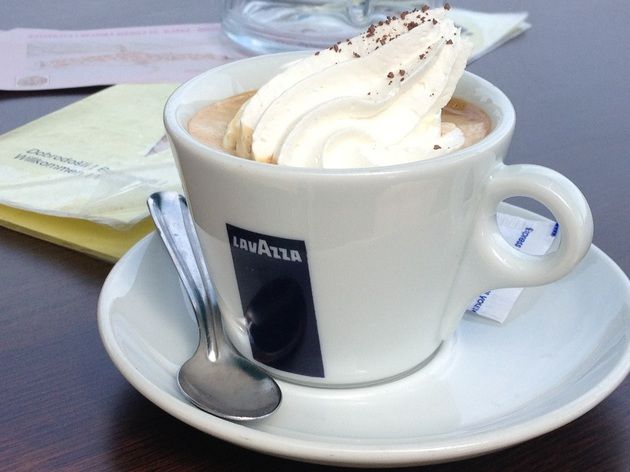
Everywhere in Croatia coffee drinking is a ritual. In Split it’s a way of life. Inviting someone for a coffee doesn’t even have to include coffee, it’s just a code for spending some time socializing. Of course, everything is much easier with the climate Split has. On the other hand, ordering coffee is not that simple, and waitors are the usual victims. One of them told me once, jokingly, that it’s impossible to use any kind of gadget to speed up the ordering process, since there is no software to remember all the varieties. You just must have YOUR coffee to qualify for being Splićanin (person living or originated in Split), and here are some rules.
22 Gregory of Nin’s toe as one of European Top 10 lucky charms
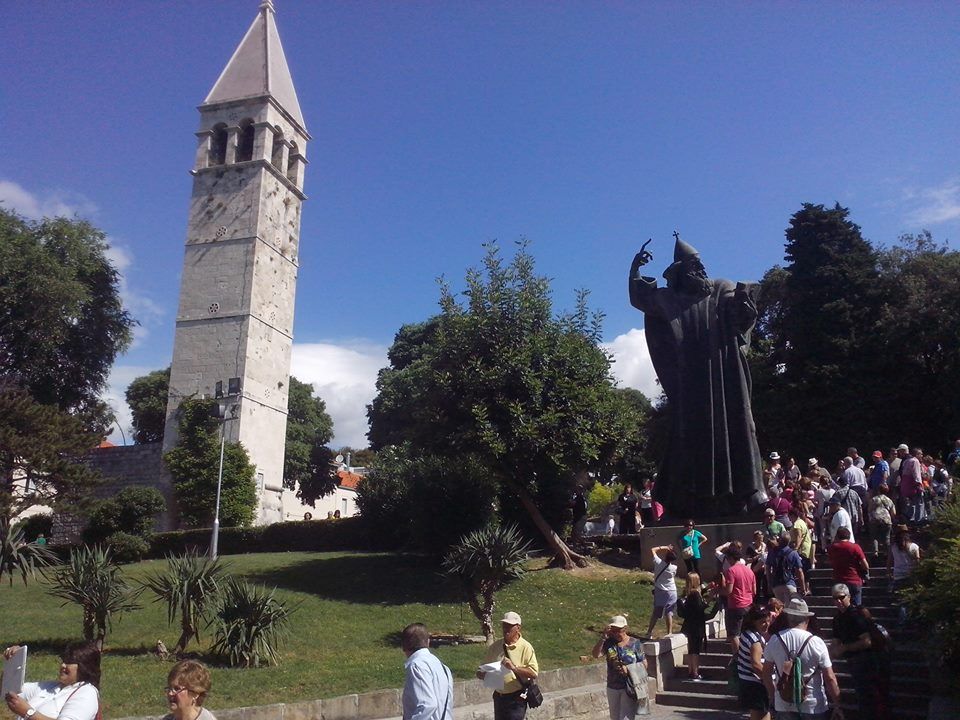
Verona has Juliet’s breast, New York has Wall Street bull’s balls, but Split has Gregory of Nin’s toe. One of the most popular landmarks in town, this giant statue of 10th century bishop made by renowned sculptor Ivan Meštrović in 1929 just can’t be missed. It’s important as a piece of history, and as an artwork, but any tourist will care much more about getting some good luck by rubbing its shiny toe.
23 Dubrovnik may be King’s Landing, but Split is Mereen and Braavos
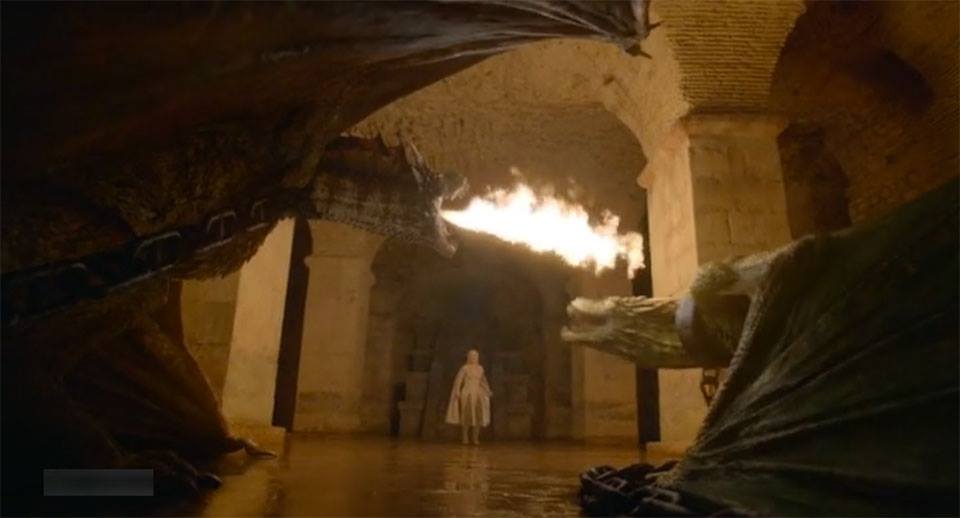
Game of Thrones pulled out of Croatia, hopefuly only temporary, but filming locations are not going anywhere, and make the show’s fans happy. There are lot of tours like this one, which includes locations within Diocletian’s Palace (yes, even the room with Daenerys’ dragons!), Klis fortress which dubbed Meereen, the quarry in nearby Žrnovnica, Kaštel Gomilica AKA Braavos and the old watermill on river Žrnovnica where Missandei first spotted Greyworm while bathing.
24 City where nobody calls its squares by its real names
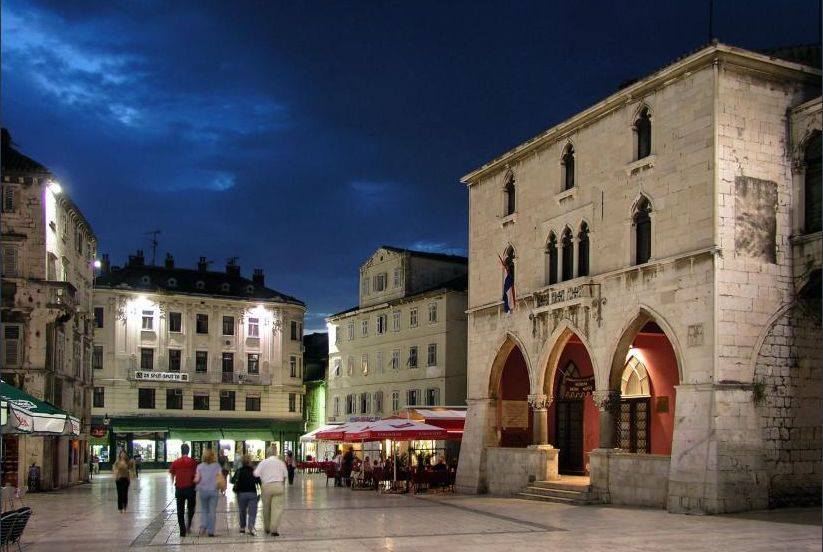
Although it looks like a labyrinth, moving around Split is not that difficult when you realize a simple pattern – all the roads going downhill are leading to the sea. However, it might be tricky to ask locals where some address is. People in Split have their own alternative names for almost all of them, and usually don’t use those official ones. Of course, it’s not a written-in-stone rule, but throughout history those names changed so often, that it is understandable. So it’s important to remember names like Voćni trg (Fruit Square), Pjaca (Piazza) or Prokurative. If you ask for Square of Radić brothers, People’s Square or Republic Square God knows where you might end up.
25 The world’s first chocolate record and biggest chocolate square
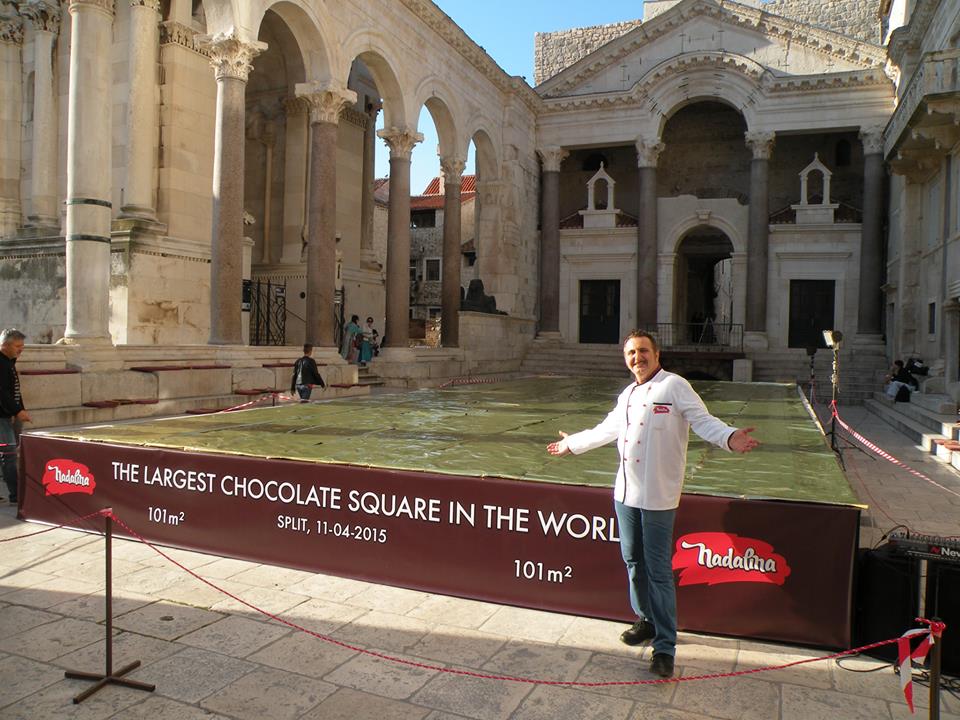
I have known Marinko Biskic for about 30 years. When we were young, his punk band was much more successful in the local scene than mine, but we managed to perform a few times together. In the meantime he started to produce first spices, and then chocolate with different Mediterranean herbs. I must say, my favourite is the one with olive oil. But all that is nothing until he connected his two affections, music and chocolate, and produced a chocolate record that actually plays a few times before you have the pleasure of eating the record. And, not content with that, Marinko entered the Guinness Book of Records last year for the largest chocolate square in the world on Peristil. Learn more here.
Thanks Ivica! And now you have learned about Split, it is time to see it close up. Contact Ivica for more information and to book a tour.


